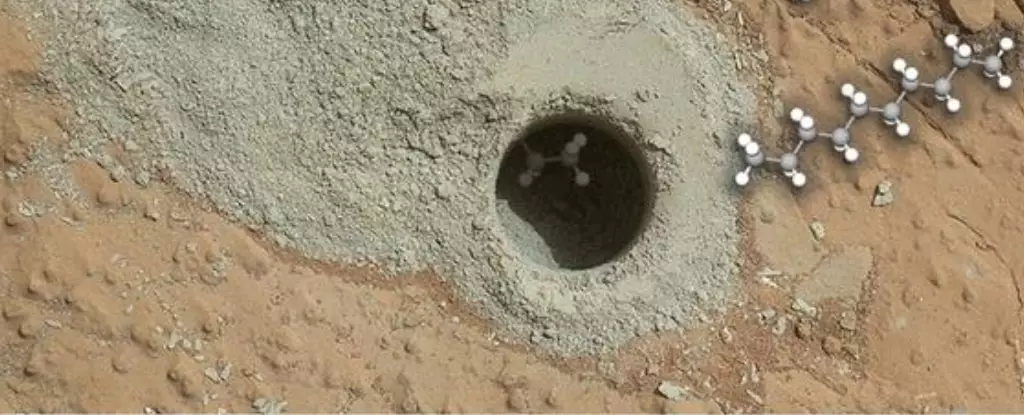Mars has long captivated humanity’s imagination, serving as both a destination for exploration and a subject of scientific inquiry. Recent discoveries about carbon compounds on the red planet add layers to our understanding of its potential to harbor life. In an enlightening study led by Caroline Freissinet from France’s CNRS, NASA’s Curiosity rover has unveiled intriguing evidence of carbon chains consisting of up to a dozen atoms, detected in an ancient lakebed. These findings bolster the theory that Mars could have once cultivated life or at least provided the building blocks for it.
The significance of detecting such long carbon chains is immense. They signal not just the presence of organic compounds, but they also suggest a richer geological history than previously understood. The Curiosity rover has meticulously traveled through Gale Crater, mapping the complexities of Martian geology and chemistry, and revealing sites like the mudstone deposit known as Cumberland. This area, once submerged, serves as a frozen time capsule, preserving organic molecules and hints of the changing climate that shaped the Martian surface.
Unraveling the Origin of Carbon Compounds
While the origins of these carbon chains can be attributed to non-biological processes, the mere existence of such compounds raises profound questions about their genesis. Researchers employed a sophisticated technique aiming to minimize combustion while analyzing samples, heating them to a staggering temperature of 850 °C (1,562 °F) to identify saturated hydrocarbons such as decane (C10H22) and undecane (C11H24). The results show that even under harsh Martian conditions, complex organic chemistry can occur.
This revelation is critical in eliminating the reductive view that organic compounds on Mars can only arise from extraterrestrial life or meteorite impacts. The possibility exists that these hydrocarbons emerged through geological processes analogous to those on Earth. Notably, the presence of benzoic acid in the same samples hints at a complex interplay of organic reactions shaping the Martian landscape over eons. This direct chemical connection to Earth’s organic biochemistry cannot be ignored, as it suggests that ingredients for life, at least in their molecular forms, are inherently universal.
The Implications of Finding Long-Chain Carbons
The implications of such findings extend beyond mere curiosity; they catalyze a rift in how we define life in extraterrestrial environments. While abiotic mechanisms could account for the formation of these carbon chains, it does not discount the tantalizing likelihood that they could also represent remnants of biological processes. After all, the carboxylic acids that our own bodies utilize mirror those that have been detected within Martian samples. The researchers postulate that these molecules are indeed universal products of biochemistry, lending credence to the notion that life may not be exclusively terrestrial.
It is easy to become lost in the tantalizing hypothesis that Mars could have been a cradle for life. As scientific instruments on the Curiosity rover probe deeper into the Martian crust, we find ourselves on the precipice of new discoveries that might unveil not only the history of the planet but also fundamental insights into life itself. This seduction toward biological interpretation encourages a shift away from solely abiotic explanations and opens the door to exploration for more complex biosignatures in future missions.
The Road Ahead: Future Missions and Extrapolations
What lies next in our quest to decipher Mars’ organic chemistry? It is clear that current technology, represented by Curiosity, merely scratches the surface of understanding Martian geology. Future missions will undoubtedly refine our approach. Equipped with more advanced instruments and targeted exploration plans, scientists can hone in on locations that may reveal additional layers of complexity in the search for life.
As we stand on the threshold of exploration, fueled by the passion and curiosity that drove the early navigators of our own planet, we must dare to dream about the secrets Mars has yet to offer. Should we prove that organic molecules are the fragments of life forms, the implications would be astoundingly transformative, prompting humanity to rethink its place in the universe. In this grand cosmic puzzle, the long chains of carbon on Mars could be the very threads stitching together our understanding of life’s potential — both here and beyond.

